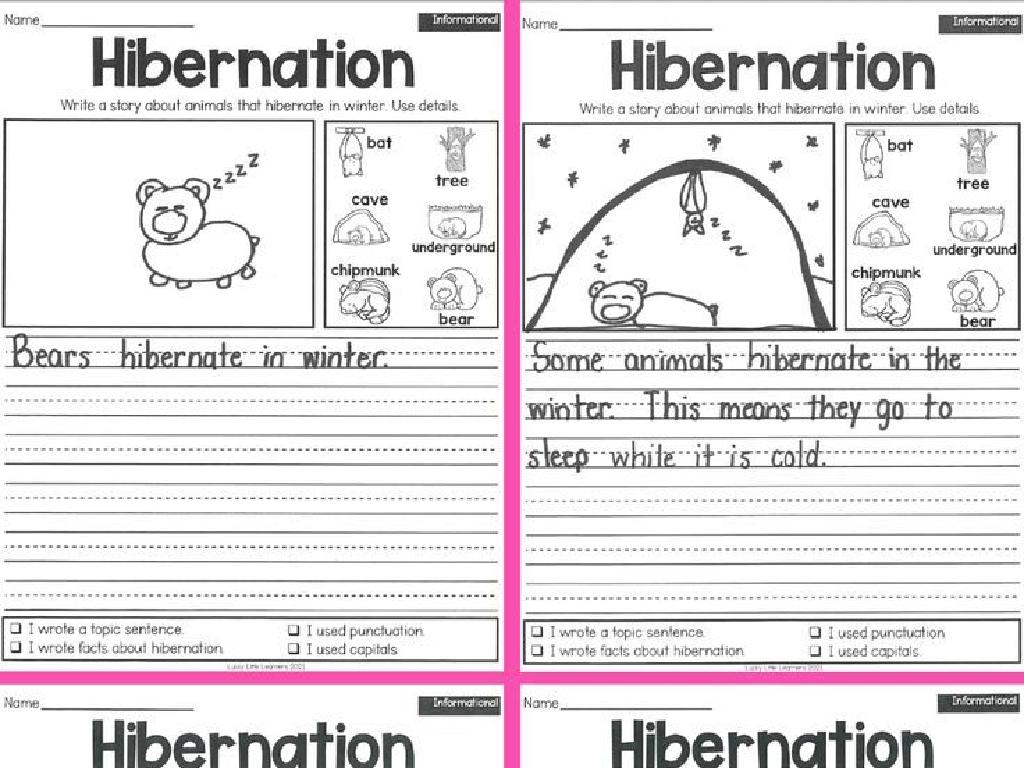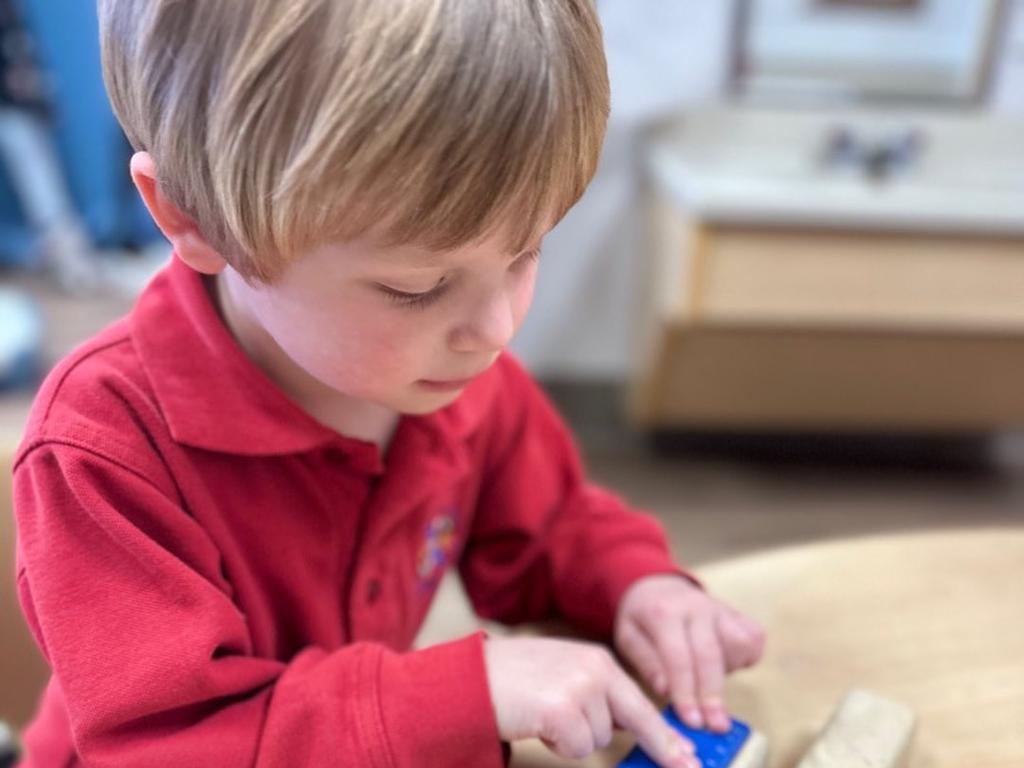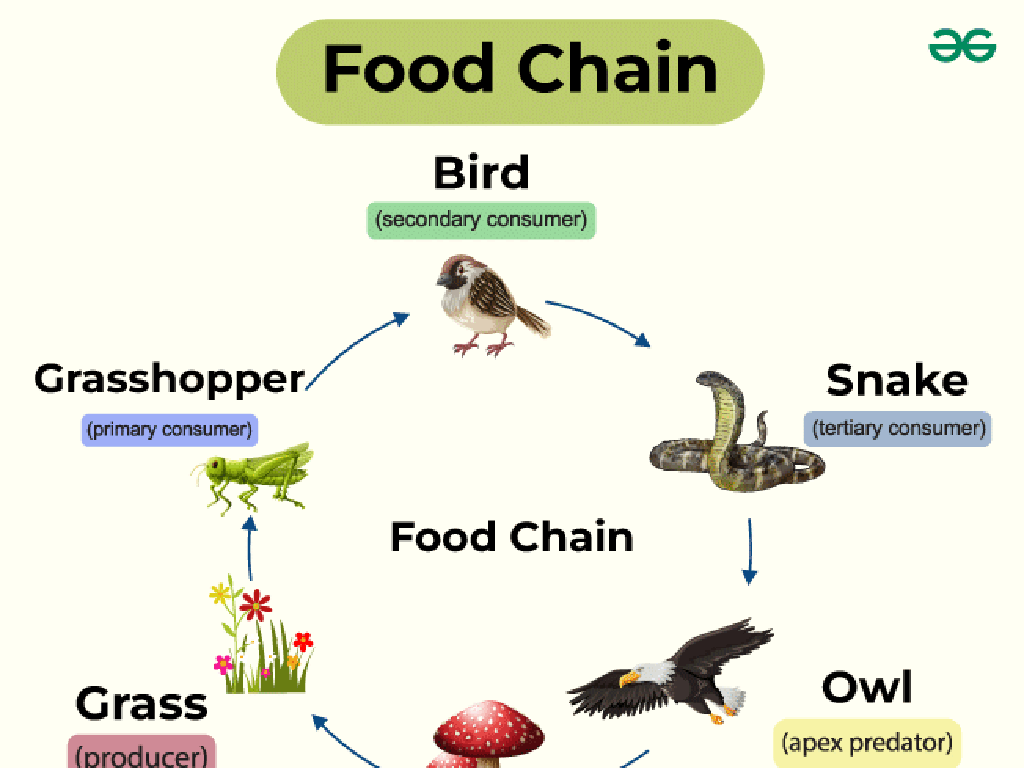Subtracting 10
Subject: Math
Grade: First grade
Topic: Subtraction Up To 20
Please LOG IN to download the presentation. Access is available to registered users only.
View More Content
Welcome to Subtraction: Subtracting 10
– Good morning and welcome!
– Today’s focus: Subtracting 10
– What is subtraction?
– Subtraction means taking away numbers from each other.
– Practice taking away 10
– Examples: 20 – 10 = 10, 15 – 10 = 5
|
Greet the students warmly to create an inviting learning atmosphere. Introduce the concept of subtraction as simply ‘taking away’. Use visual aids like counters or fingers to demonstrate subtraction by removing 10 from different numbers. Start with 20, as it’s a familiar base number for first graders, and show how subtracting 10 leaves us with 10. Then, move to other numbers like 15, 14, and so on, always taking away 10 and seeing what number we have left. Encourage the students to use their fingers or objects to count backwards from different starting points to subtract 10. This hands-on activity will help solidify their understanding of the concept.
Understanding Subtraction: Subtracting 10
– Subtraction is like giving away
– Start with 10 apples
– Imagine having a full basket of 10 apples
– Give 1 apple away
– If you give 1 apple to a friend,
– How many apples left?
– Count the remaining apples in the basket
|
This slide introduces the concept of subtraction to first graders by relating it to a tangible example of having and giving away apples. Start by explaining that subtraction is the process of taking away one amount from another. Use the example of starting with 10 apples to make it relatable and easy to visualize. Encourage the students to imagine giving one apple away and then counting how many are left to find the answer. This helps them understand that subtraction is simply finding out the remaining quantity after some has been taken away. Reinforce the concept by having students use physical objects like counters or drawings to represent the apples being subtracted.
Subtracting 10 from Numbers
– Counting down from 20 to 10
– Let’s count together: 20, 19, 18, …, 10
– Subtracting 10 steps back
– If we have 20 and take away 10, where do we land?
– Understanding subtraction as reverse of addition
– Practice with examples
– Example: 20 – 10 = ?, 15 – 10 = ?
|
This slide introduces the concept of subtraction by counting backwards, specifically subtracting 10 from a number. Start by engaging the students in a counting down activity from 20 to 10 to illustrate the concept of ‘taking away’. Explain that when we subtract 10, we are jumping back 10 spaces on the number line. Emphasize that subtraction is the opposite action of addition. Provide simple examples such as 20 – 10 and 15 – 10, and encourage the students to use their fingers or objects to count backwards. This will help them visualize the subtraction process and understand that subtracting 10 moves us 10 numbers lower. The goal is to make them comfortable with the idea of subtraction as a form of counting back.
Subtracting 10: Let’s Practice!
– Subtracting 10 from 20
– What is 20 minus 10?
– Subtracting 10 from 15
– What is 15 minus 10?
– Counting backwards from 20 and 15
– Let’s count backwards together from 20 and 15
– Using fingers to subtract 10
– We can use our fingers to count down 10 steps
|
This slide is aimed at helping first graders understand the concept of subtracting 10 from different numbers. Start by showing them the first example, 20 minus 10, and guide them to the answer. Repeat the process with 15 minus 10. Encourage the students to use their fingers to count backwards from 20 and 15, subtracting one finger for each count until they reach 10 less. This tactile activity helps reinforce the concept of subtraction by providing a physical way to count down. During the next class, review these examples and ask students to demonstrate their understanding by using their fingers to subtract 10 from other numbers up to 20.
Practice Time: Subtracting 10
– Let’s practice subtracting 10
– I’ll show you some numbers
– You subtract 10 from each one
– If I show you 15, what is 15 – 10?
– Show your answers to the class
– Be ready to explain how you got your answer
|
This slide is designed to engage students in active practice of subtracting 10 from various numbers. Start by demonstrating a few examples on the board, such as 20 – 10 = 10, and then encourage the students to try on their own. Provide them with numbers like 15, 11, and 19, and ask them to subtract 10 from each. Walk around the classroom to assist any students who may be struggling and to check their work. Afterward, invite students to come up to the board and show their answers, explaining how they arrived at them. This will help reinforce their understanding and give them the opportunity to practice their subtraction skills in a supportive environment.
Let’s Play a Subtraction Game
– We’ll play with dice
– Start at 20, roll the dice
– Subtract the number rolled
– If you roll a 4, what is 20 – 4?
– See who reaches zero first!
– It’s a race to zero, can you win?
|
This interactive game is designed to help first graders practice subtracting from 20. Each student will have a turn to roll the dice. Whatever number they roll, they will subtract from 20. This will help reinforce their understanding of subtraction by 10 and other numbers up to 20. For the teacher: Prepare dice for each group of students. Monitor the students as they play to ensure they are subtracting correctly. Offer guidance if they struggle to find the answer. Have a chart ready to keep track of each student’s progress towards zero. Encourage students to help each other and to use their fingers or number lines if they need to. This game can be played in small groups or as a whole class activity.
Class Activity: Subtraction Bingo
– Let’s play Subtraction Bingo!
– Subtract 10 to find your number
– If you have 15, what’s 15 minus 10?
– Mark the number if you get it right
– Aim for five in a row to win!
|
This interactive class activity is designed to help first graders practice and reinforce their understanding of subtracting 10 from numbers up to 20. Prepare bingo cards with numbers up to 20 for each student. Explain the rules clearly, emphasizing the subtraction of 10 from the numbers they have. As numbers are called out, students must calculate and subtract 10, then mark the number if it’s on their card. The goal is to get five correct answers in a row. Possible variations of the game could include: 1) Using different patterns on the bingo card, such as ‘four corners’ or ‘full house’; 2) Having students create their own bingo cards with numbers up to 20; 3) Pairing students to encourage teamwork; 4) Offering small rewards for winners to motivate participation. This activity not only makes learning subtraction fun but also encourages quick mental math skills.
Review: Subtracting 10
– Subtraction means taking away
– Subtract 10 by counting back
– If we have 15 apples and take away 10, we have 5 apples left.
– Let’s see an example together
– Can someone subtract 10 from 20?
– Practice makes perfect!
|
This slide is a review of the subtraction concept, specifically focusing on subtracting 10 from numbers up to 20. Begin by reminding students that subtraction is the process of taking away from a group or number. Demonstrate how to subtract 10 from a number by counting backwards, and use visual aids like number lines or counters if possible. Ask for a volunteer to provide an example of subtracting 10 from a number, guiding them through the process. Encourage all students to practice this skill with different numbers to build their confidence and fluency in subtraction.
Conclusion and Goodbye!
– Great job learning subtraction!
– Practice makes perfect
– Keep practicing at home
– Try subtracting 10 from different numbers
– Excited for more math fun!
– We’ll explore more subtraction in our next class
|
This slide wraps up the lesson on subtracting 10 and is meant to congratulate the students on their hard work. It’s important to encourage them to continue practicing at home to reinforce their skills. Provide some simple examples or a worksheet that they can take home for extra practice. Let them know that subtraction is a fundamental skill that they’ll use often, and there’s much more to learn and have fun with in future lessons. Looking forward to seeing their progress in the next class!






